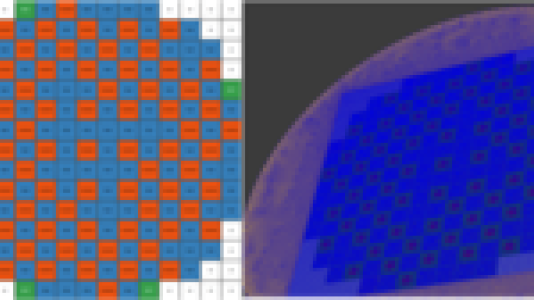
The Reactor Geometry Generator development team at Argonne National Laboratory is pleased to announce the release of RGG 2.0.
RGG is an open source tool developed by Argonne’s Mathematics and Computer Science Division staff for generating several types of nuclear reactor assembly/core geometry and mesh. The work is a collaborative effort with researchers at Kitware, Inc., who have developed the graphics user interface and packaging for RGG.
RGG 2.0 uses all the components of the SIGMA toolkit from Argonne. SIGMA (Scalable Interfaces for Geometry and Mesh-based Applications) tools evolved as part of a DOE SciDAC program. One of the key SIGMA tools used by RGG is MeshKit, an open-source library of advanced mesh-generation tools and algorithms.
“Professional users and even novice reactor core designers will be easily able to create geometry and mesh models with this tool,” said Rajeev Jain, one of the toolkit’s developers. “It has a new file format that enables users to maintain only a single reactor model file. All the input files required by MeshKit are now automatically generated. RGG also carries out mesh sectioning automatically for users, both visually and in the creation of input files related to MeshKit.”
Among the other features of RGG are the ability to create boundary layer elements for CFD meshes and view 2D schematic, geometry, and resulting mesh models; it also allows loading in meshes created outside of RGG; to view meshes based on material, volume, and Neumann-set classifications; and to save meshes and subsets in various mesh file formats provided by MOAB (Mesh Oriented datABase, one of the SIGMA tools).
“Multiphysics simulations require complex, large, unstructured meshes that can be difficult to create,” said Jain. “RGG uses a hierarchical lattice-based approach that greatly simplifies the generation of reactor core meshes.”
RGG tools have been used in several large multiphysics simulations, including a very high-temperature reactor, a full-core model of the Korean MONJU reactor, part of a pressurized water reactor core, the fast reactor Experimental Breeder Reactor-II core with XX09 assembly, and an Advanced Breeder Test Reactor core.
RGG 2.0 is available for download on the web at: http://www.computationalmodelbuilder.org/download/